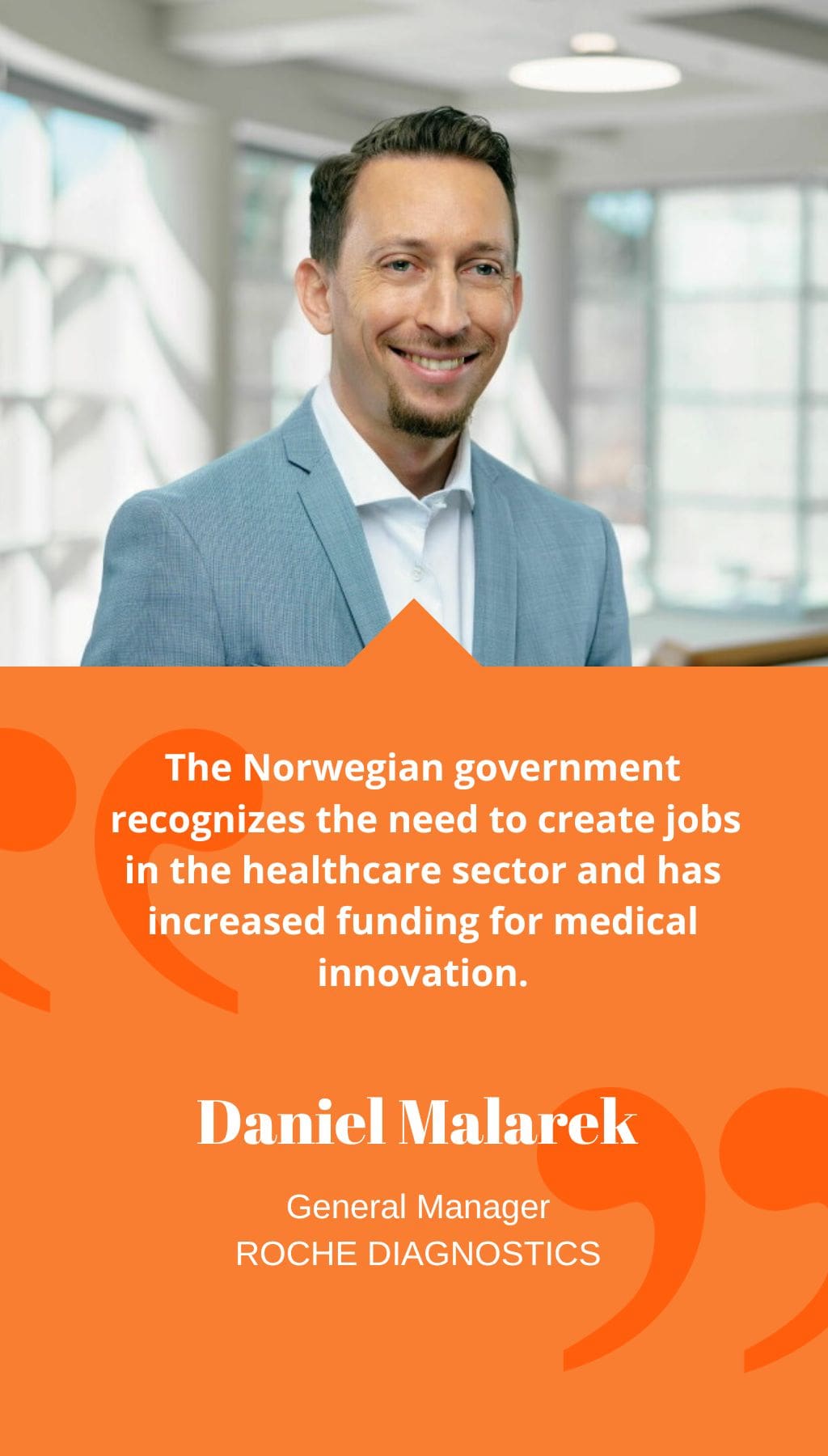
- Norway | 2 November 2020

How do Roche Diagnostics’ Norwegian operations fit into the wider organization?
Roche Diagnostics takes a decentralized approach to business, allowing individual countries, regardless of their size, the freedom to tailor their approach to the local market. This customer-centricity sets us apart from other multinational corporations and motivates our employees. We adapt to our customers locally, focusing on what is best for them and the patients.
How has Roche Diagnostics Norway performed during 2020?
The COVID-19 pandemic impacted our business in different ways. Routine testing saw a decline as patients were reluctant to visit hospitals, but there was a significant increase in demand for COVID tests. Roche invested heavily in developing COVID-related products and launched more than 11 such products to support global efforts against the pandemic. Norway built an effective testing infrastructure, and while reagent supply challenges affected major players, Roche’s production ramp-up helped meet Norwegian customer needs.
Was Norway sufficiently aware of the importance of diagnostics prior to the pandemic?
Diagnostics’ importance was not fully recognized in Norway or any country. Research shows diagnostics play a crucial role in medical decision-making, yet healthcare budgets allocate less than two percent for diagnostics. Making the right diagnostic decisions is critical for patient care and cost reduction. The pandemic raised awareness, and hospitals were given the go-ahead to increase testing capacity. Norwegian customers showed creativity and collaboration to address high demand. Dialogue and investment in innovative diagnostics are needed to improve patient care.
Could you tell our readership about the products Roche Diagnostics Norway plans to launch next year?
We aim to expand the test menu on the cobas 6800 system, our fully automated platform for COVID testing. This expansion will allow labs to consolidate most PCR tests on this platform, optimizing workflow, increasing testing capacity, and reducing manual labor. Customer feedback on the cobas 6800 platform has been positive, and we want to enable customers to shift a significant portion of their portfolios to this platform.
Tell us about the Norwegian approval process for new tests.
Norway often requires a health technology assessment for innovative tests. Authorities assess inclusion in guidelines and reimbursement decisions. The process can be lengthy, and quicker decision-making with more dialogue and transparency would benefit both public and industry goals of improving patient care and reducing costs.
What qualities are needed to succeed in the Norwegian market?
Building trust with customers is vital in smaller markets where customers freely communicate and share experiences. Transparency, innovation, and driving change in medical practice are key success factors. Being at the forefront of innovation is important to Norwegian customers.
What education do you provide to customers using your products?
Early adopters pilot new technologies, and collaboration with key opinion leaders is essential. Roche closely collaborates with experts in various fields. For example, Roche worked with Professor Christian Hall at the University of Oslo to prove the significance of the biomarker NT-proBNP, now a global gold standard. Ongoing collaboration with key opinion leaders drives innovation.
How are large public and private organizations fostering innovation in Norway?
The Norwegian government recognizes the need to create jobs in the healthcare sector and has increased funding for medical innovation. Roche initiated innovation days, fostering collaborations with Norwegian startups and strategically relevant pitches. Commercial partnerships with startups allow bringing exciting innovations to customers and patients worldwide.
How does Roche Diagnostics foster diversity in the workplace?
While Norway is not very diverse, Roche Diagnostics Norway embraces internationalism. The office has a multicultural environment, with employees from 15 nationalities across five continents. The organization values diversity, seeing it as adding perspective and fostering creativity.
What are your strategic priorities over the next five years?
Our top priority is extreme customer focus. Bringing innovations to customers and patients is critical for maintaining market leadership. Additionally, Roche aims to become a leader in digital healthcare, creating tools and algorithms for clinical decision support and comprehensive disease management. The Norwegian market has potential for receptive digital solutions that improve patient outcomes and reduce costs.














